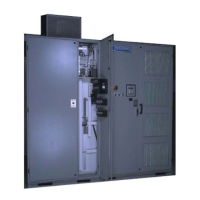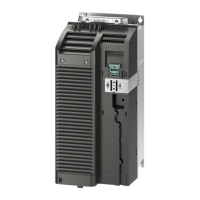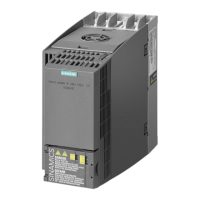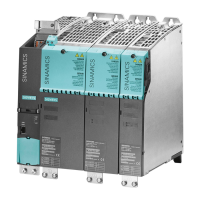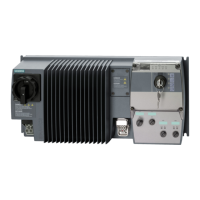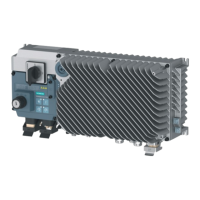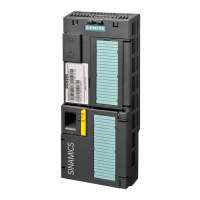8.9.3 Dual-Frequency Braking Limitations
Limitations of DFB
The drive output current plus the braking current must not exceed the current capability of the
cells in the drive. Hence the braking torque is limited in the drive, it is greatest at slow speed and
smallest at high speed. The typical braking torque that can be expected with DFB is illustrated
below.
3HUFHQWRI5DWHG6SHHG
3HUFHQWRI5DWHG7RUTXH
,
PD[
Figure 8-5 Braking torque with DFB for a typical motor
With high eciency and inverter duty motors, the braking torque that can be achieved with DFB
is lower than the values shown in the gure above.
Contact Siemens customer service with the motor-related data listed below to determine the
braking torque capability with a higher eciency motor. Information on critical frequencies will
allow a selection for the torque pulsation frequency.
Table 8-1 Motor related data
Rated HP Rated Voltage
Rated frequency Full-load speed
Half-load eciency Full-load eciency
Half-load power factor Full-load power factor
Locked-rotor torque Locked-rotor current
Pull-out torque Critical frequencies of the mechanical system
Advanced Operating Functions
8.9 Dual-Frequency Braking
NXGPro+ Control Manual
Operating Manual, A5E50491925A 247
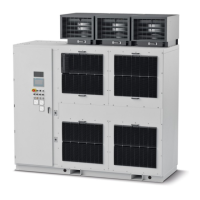
